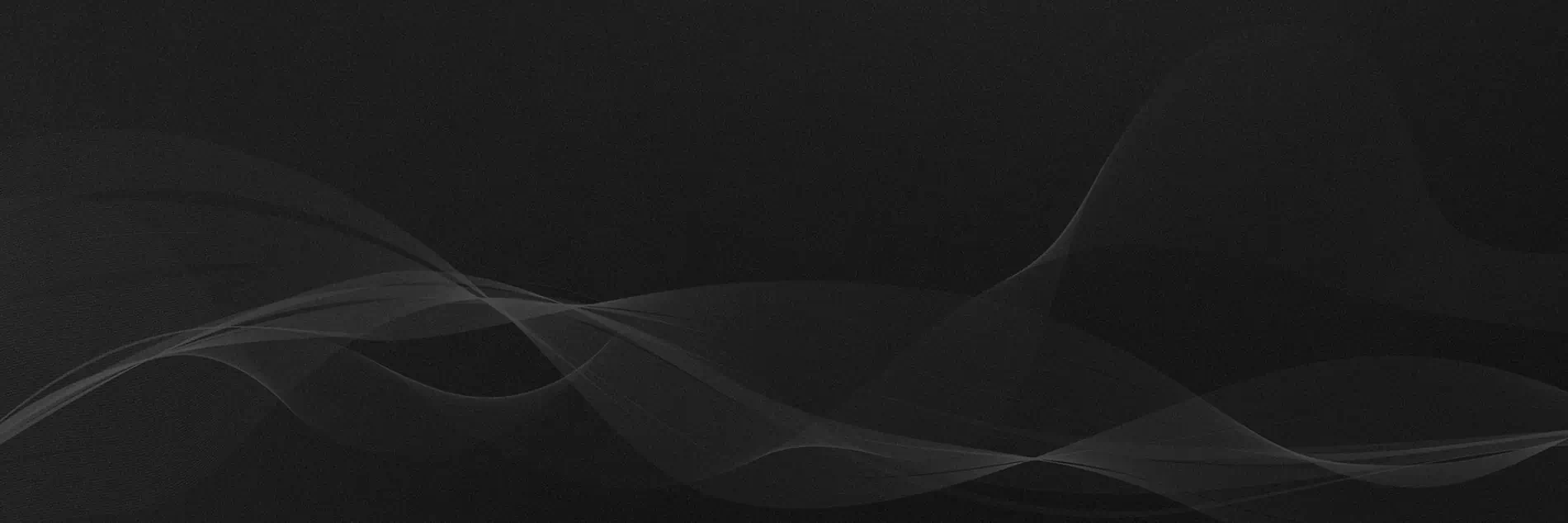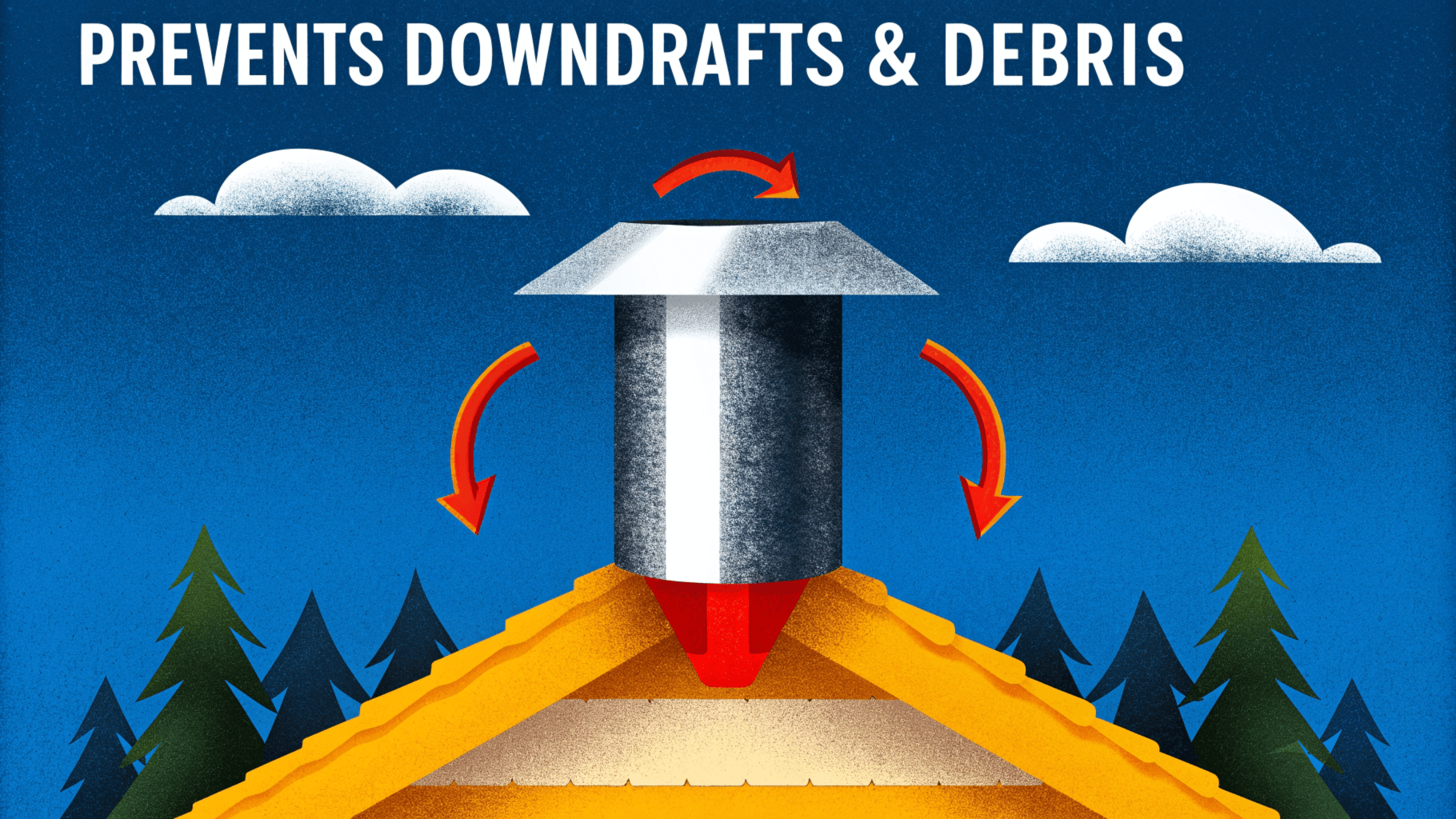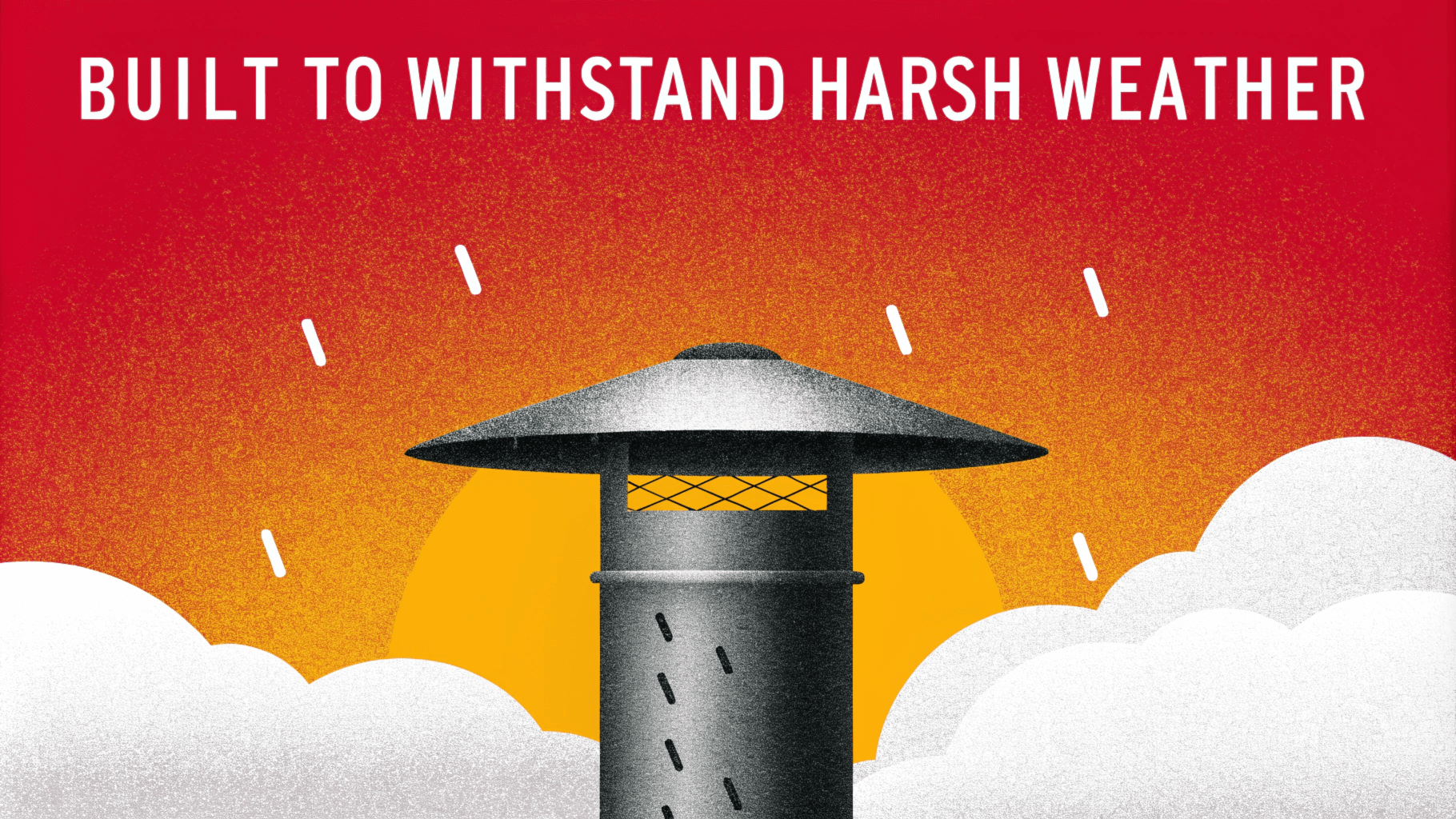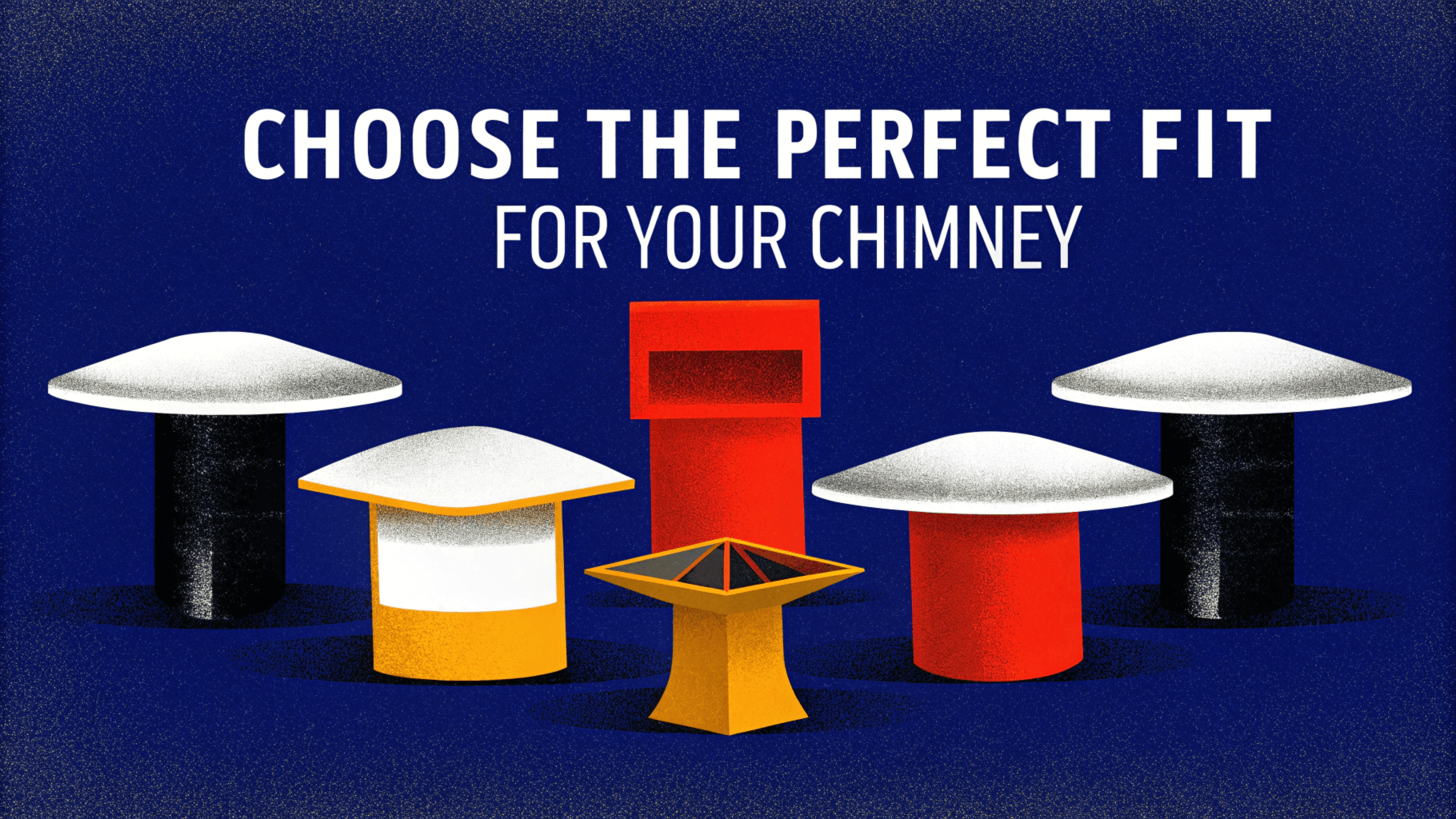Metal Chimney Caps: Essential Benefits and Considerations – Chimcare Chimney Caps
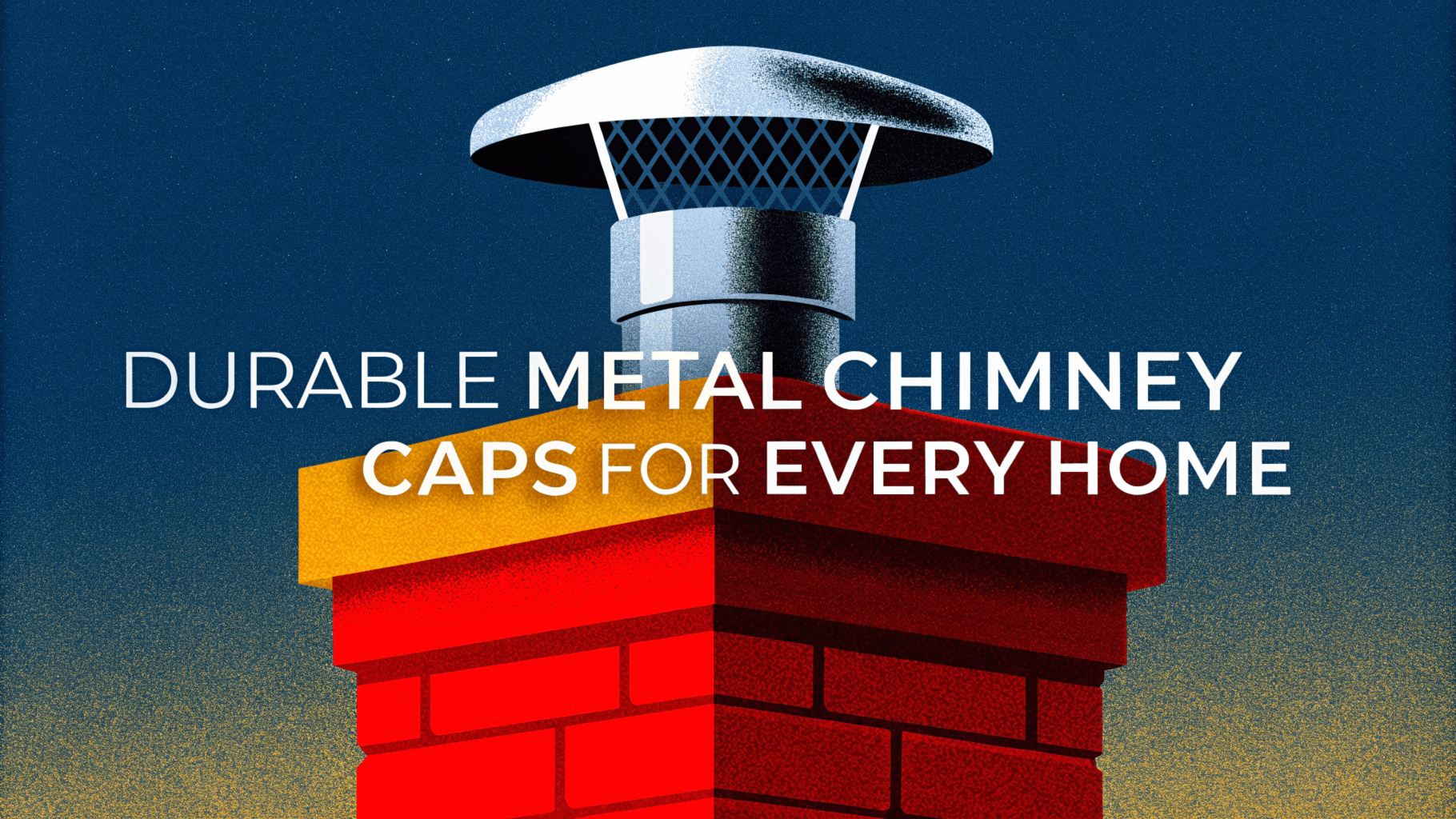
Introduction
Metal chimney caps serve an essential function in protecting your home from unwanted elements. They act as a barrier against rain, snow, and debris, ensuring your chimney remains free of blockages that can cause smoke to back up into your home. By preventing birds and animals from nesting inside the chimney, these caps also enhance safety and efficiency.
For those looking for versatility, metal chimney caps are available in various materials such as copper, stainless steel, and aluminum, each offering unique benefits in terms of durability and aesthetics. Homeowners can choose from pre-sized models or opt for custom designs, ensuring a perfect fit for any chimney type or style.
In addition to providing protection and style, the right metal chimney cap can significantly extend the lifespan of your chimney. Proper installation and regular maintenance are crucial to maximizing the effectiveness of these chimney accessories. As we explore further, understanding the different styles and features can aid in making an informed decision for your home’s specific needs.
Key Takeaways
- Metal chimney caps protect against weather and animals.
- Multiple materials and custom options are available.
- Installation and maintenance ensure long-term efficiency.
Understanding Chimney Caps
Chimney caps are vital components of any chimney system, serving multiple protective roles. In this section, we explore the foundations of chimney caps, discuss various types available, and their significance in safeguarding the chimney structure.
Fundamentals of Chimney Caps
Chimney caps primarily function to shield the flue from elements and intrusions. These caps sit atop the chimney and cover the opening of the flue. Protection from rain and debris is crucial, preventing potential water damage to the interior. They are typically fitted with screens to keep animals like birds and squirrels from entering our homes. By stopping downdrafts, caps help maintain proper airflow in the chimney, enhancing its efficiency.
Different Types of Chimney Caps
Various types of chimney caps exist to accommodate different chimney styles and needs. Single-flue caps cover individual flues, providing specific coverage for stand-alone chimneys. Multi-flue caps extend protection to multiple flues, which is useful for chimneys with multiple openings. Caps come in materials like stainless steel, copper, and galvanized steel, each offering distinct durability benefits. Choosing the right material can depend on both aesthetic preferences and functional requirements, such as resistance to specific weather conditions.
The Role of Chimney Caps in Protection
Chimney caps are vital for protecting our home’s chimney from various natural elements. They prevent rain from entering the chimney, which can cause significant water damage. By blocking debris, caps help mitigate blockages within the flue, ensuring clear pathways for smoke and gases to escape. Critter guards play a crucial role in preventing animals from nesting inside flues, reducing potential fire hazards. Effective cap installation and maintenance can extend the lifespan of the chimney and improve overall safety.
Materials and Styles
When choosing metal chimney caps, understanding the various materials and styles is crucial. Each material offers different benefits, while various styles cater to different aesthetic and functional needs.
Material Choices for Durability
Selecting the right material ensures longevity and performance. Stainless steel is popular due to its durability and resistance to rust, making it ideal for regions with harsh weather. Copper is another excellent choice, offering exceptional longevity and an appealing patina over time, though it comes at a higher cost. In contrast, aluminum offers a lighter and more economical option but may not last as long under extreme conditions. Galvanized steel is also affordable but requires powder coating to prevent rust, especially in wet climates. Each material has its strengths and drawbacks, which should be considered alongside the specific conditions of your location.
Exploring Various Style Options
We offer several chimney cap styles to match various home designs and preferences. Style #1 chimney cap is crafted for masonry chimney crowns, such as those made of stone or castable materials, adding a classic touch. Style #2, meanwhile, features standing seams that enhance its aesthetic appeal, though primarily decorative. Various other styles include hurricane caps, which are designed to withstand strong winds and protect against flying debris. These style options not only contribute to the chimney’s protection but also enhance the overall visual appeal of the home. Incorporating a specific style can significantly impact both functionality and curb appeal, making the right choice essential for homeowners.
Custom Solutions and Features
Our focus on customizing chimney caps offers homeowners various benefits, such as enhanced protection and visual appeal. We address specific needs like irregular shapes and unique masonry challenges while offering a range of features and accessories to optimize functionality.
Custom Chimney Cap Design
When it comes to chimney caps, customization involves more than choosing a color or style. Many homes feature unique chimney masonry, which can pose challenges for standard caps. We tailor our designs to fit these irregular shapes. This ensures comprehensive coverage and protection against elements.
Materials play a crucial role. Options like copper, stainless steel, and aluminum can be employed based on durability needs and aesthetic preferences. Our team works closely with clients to understand their requirements and find solutions that complement their home’s exterior.
Unique Features and Accessories
Custom chimney caps can be enhanced with a variety of features and accessories, adding both utility and style. For example, choosing a cap with built-in ventilation can help improve air flow and reduce smoke accumulation. We offer accessories like mesh screens to prevent animals from entering the chimney.
There are also aesthetic features like decorative shrouds that can match or accentuate the property’s architectural details. Accessories not only boost the performance of the chimney but also elevate the visual appeal of the entire chimney structure, allowing us to provide our clients with practical and attractive solutions.
Installation and Maintenance
Installing and maintaining a metal chimney cap ensures proper protection against weather and pests. It is important to consider safety and accuracy during installation, while regular maintenance keeps the cap in optimal condition.
Installing Your Chimney Cap
Before we begin the installation, we must inspect the chimney crown for damage and remove any debris. A detailed measurement of the chimney’s shape and size ensures the cap will fit securely. We recommend using a ladder to access the roof safely.
Working with metal screws, we will secure the cap to the chimney. Aligning the cap properly is crucial to maintain even spacing and function. Once the cap is positioned, mark where the screws will go. Using a drill is often necessary to create holes for the screws.
After securing the cap, verify that it sits level. This guarantees proper function and protection. Adhering to these steps can help prevent issues such as leaks or pest entry. With careful attention to detail, we enable long-term performance of the chimney cap.
Maintaining Your Chimney Cap
Regular maintenance is key to extending the life of our chimney cap. We should check for blockages or signs of wear at least once a year. Cleaning involves brushing away debris from the mesh and checking the mortar joints for cracks.
Inspecting the cap for rust or damage helps us identify issues early. Repairing or replacing damaged parts prevents further complications. Maintaining the integrity of the chimney crown is essential, as any damage here can affect the cap’s performance.
If weather conditions are harsh, more frequent maintenance checks might be necessary. Applying rust-resistant coatings can also add an extra layer of protection. By following these maintenance steps, we ensure a safe and efficient functioning chimney cap.
Safety and Regulations
When installing metal chimney caps, it’s essential to consider safety and regulatory standards to ensure both effective operation and compliance. This involves evaluating wildlife access prevention, fire safety, and standard compliance, which are crucial for maintaining a secure home environment.
Preventing Wildlife Access
Metal chimney caps are vital in preventing unwanted animals like raccoons and squirrels from entering our chimney systems. These creatures often find chimneys a cozy place to nest, posing risks of blockage and potential damage.
A properly installed cap with a sturdy mesh barrier keeps wildlife out without obstructing the airflow. Regular inspections are key to maintaining the integrity of the mesh, ensuring it remains effective against animal intrusion. Keeping the mesh clean and free of debris is crucial for optimal performance.
Fire Safety and Spark Arrestors
Fire safety is a critical aspect of chimney cap installation, with spark arrestors playing a fundamental role. These wire mesh components prevent hot embers from escaping the chimney and igniting the roof or surrounding structures.
We must ensure that the mesh size is appropriate to stop sparks while allowing smoke to vent efficiently. Regular maintenance, including cleaning the mesh and checking for wear, is essential to maintain the arrestor’s effectiveness. Properly functioning spark arrestors contribute significantly to overall fire safety.
Understanding Compliance and Standards
Compliance with building codes and standards such as NFPA 211 is mandatory when installing and maintaining chimney caps. These regulations dictate materials, design, and placement, ensuring safety and functionality.
Metal chimney caps need to adhere to specifications like cap material, sizing, and installation methods. We must be diligent in confirming that our installations meet these requirements to avoid potential hazards and legal issues. Staying up-to-date with any changes in standards helps ensure ongoing compliance and safety.
Frequently Asked Questions
In this section, we address common inquiries about metal chimney caps, focusing on costs, materials, sourcing, and sizing. These insights are crucial for ensuring a long-lasting and effective chimney cap installation.
How much does a metal chimney cap typically cost?
The cost of a metal chimney cap varies depending on the material, size, and design. Basic models can cost around $30 to $100, while high-end options, such as custom or oversized caps, may range from $150 to $300 or more.
What is the proper name for a metal cap on a chimney?
The proper term for a metal cap on a chimney is a “chimney cap.” It serves to protect the chimney from weather elements, debris, and animal ingress, while also improving updraft and preventing downdrafts.
Are stainless steel chimney caps more beneficial than other materials?
Stainless steel chimney caps offer distinct advantages, including exceptional durability and resistance to rust. These features make them particularly beneficial in wet climates, as they often provide a longer lifespan compared to less resistant materials, like regular metal.
What is the best type of metal to use for a chimney cap?
Stainless steel is often regarded as the best metal for chimney caps due to its corrosion resistance and strength. Copper also provides excellent durability and an attractive appearance; however, it comes at a higher price point compared to other metals.
Where can I find durable metal chimney caps for outdoor use?
Durable metal chimney caps can be sourced from home improvement stores, specialized online retailers, and local chimney service companies. It is essential to choose a reputable provider to ensure the cap meets necessary quality and weather resistance standards.
How do I choose the right size metal chimney cap for my chimney?
To select the correct size metal chimney cap, measure the dimensions of the chimney flue and ensure that the cap covers the entire area adequately. Consider the design specifics of your chimney, as some flues may require custom sizing for a perfect fit.

 We Ship Anywhere USA & Canada
We Ship Anywhere USA & Canada

